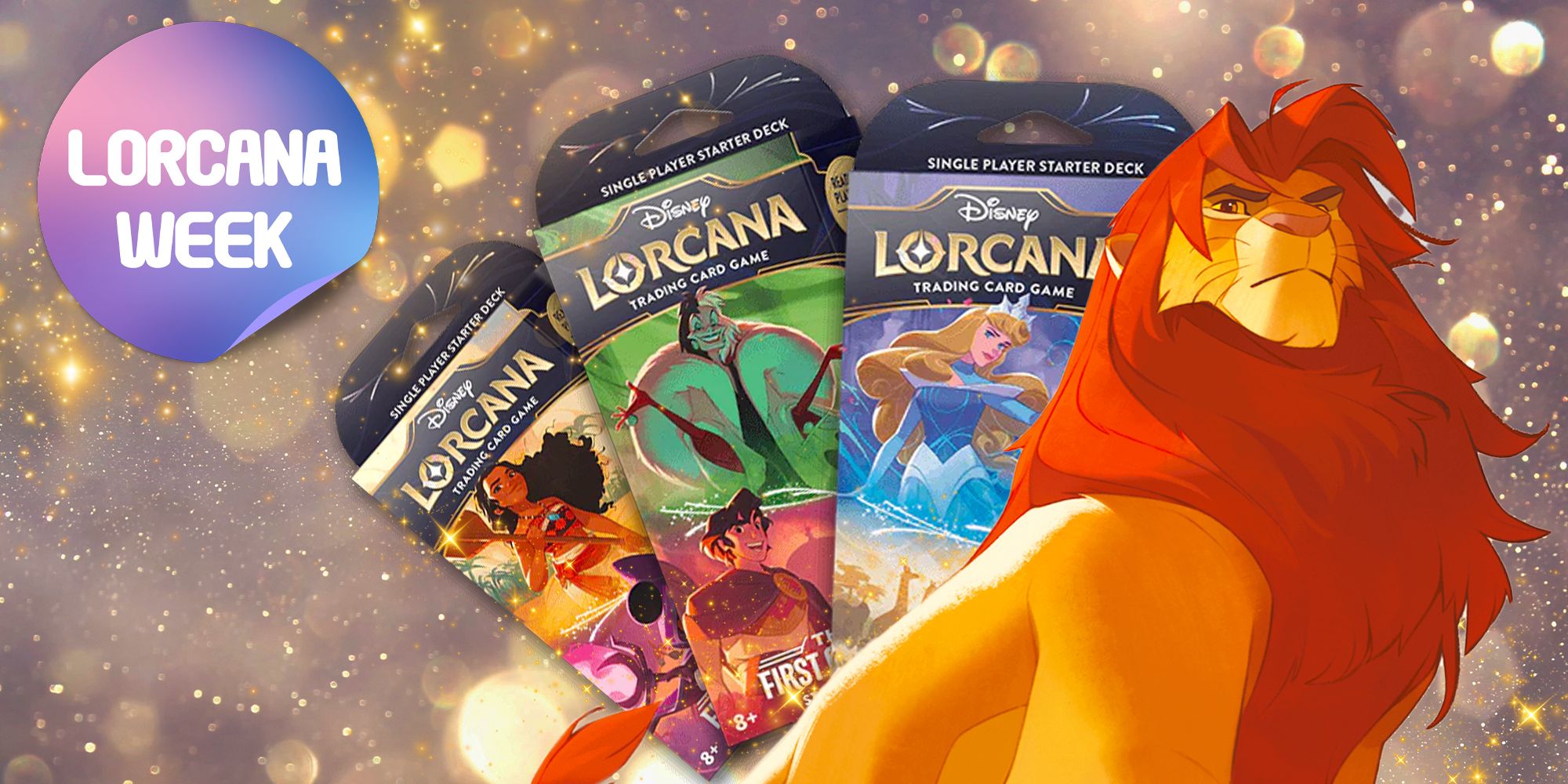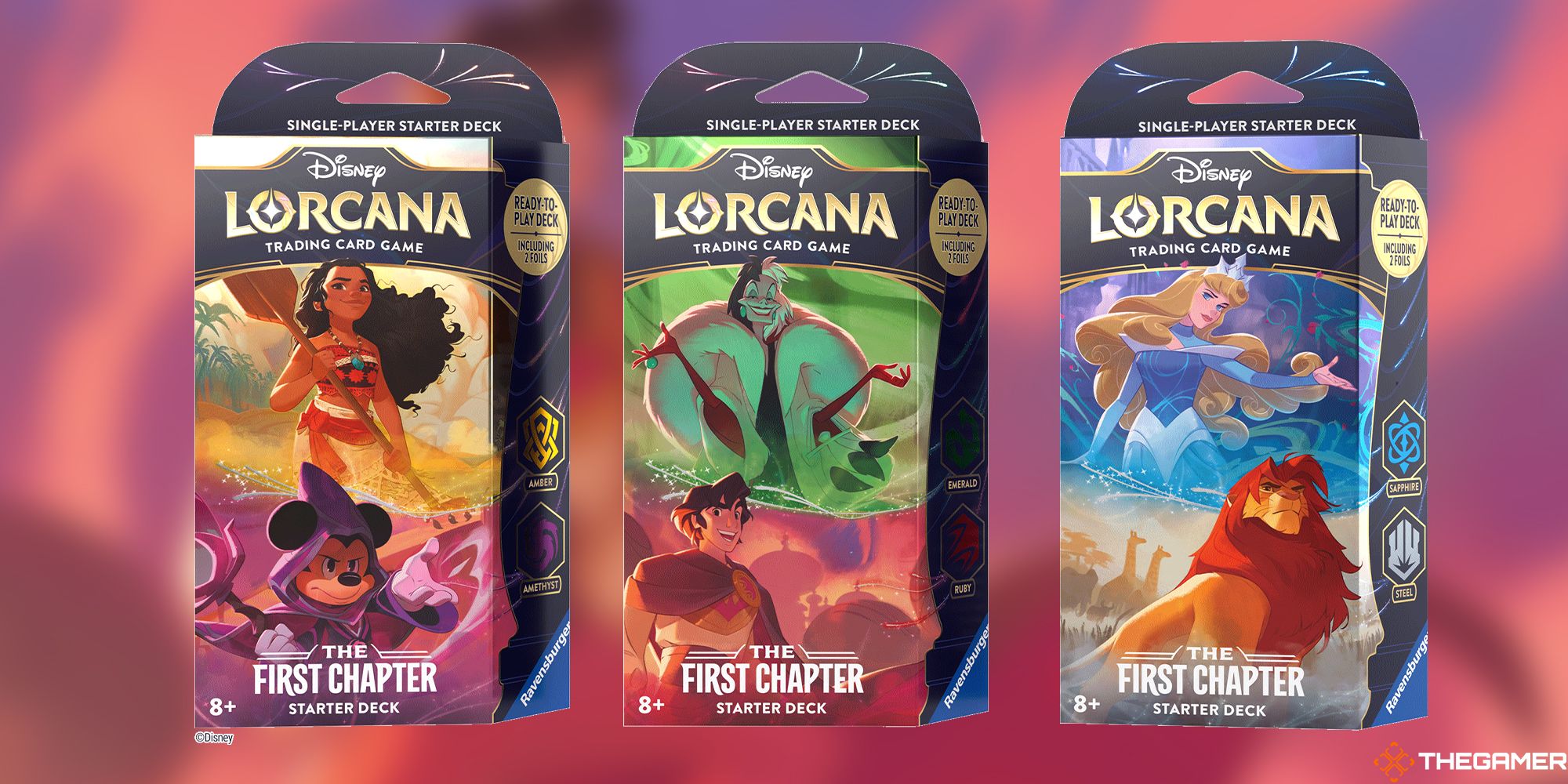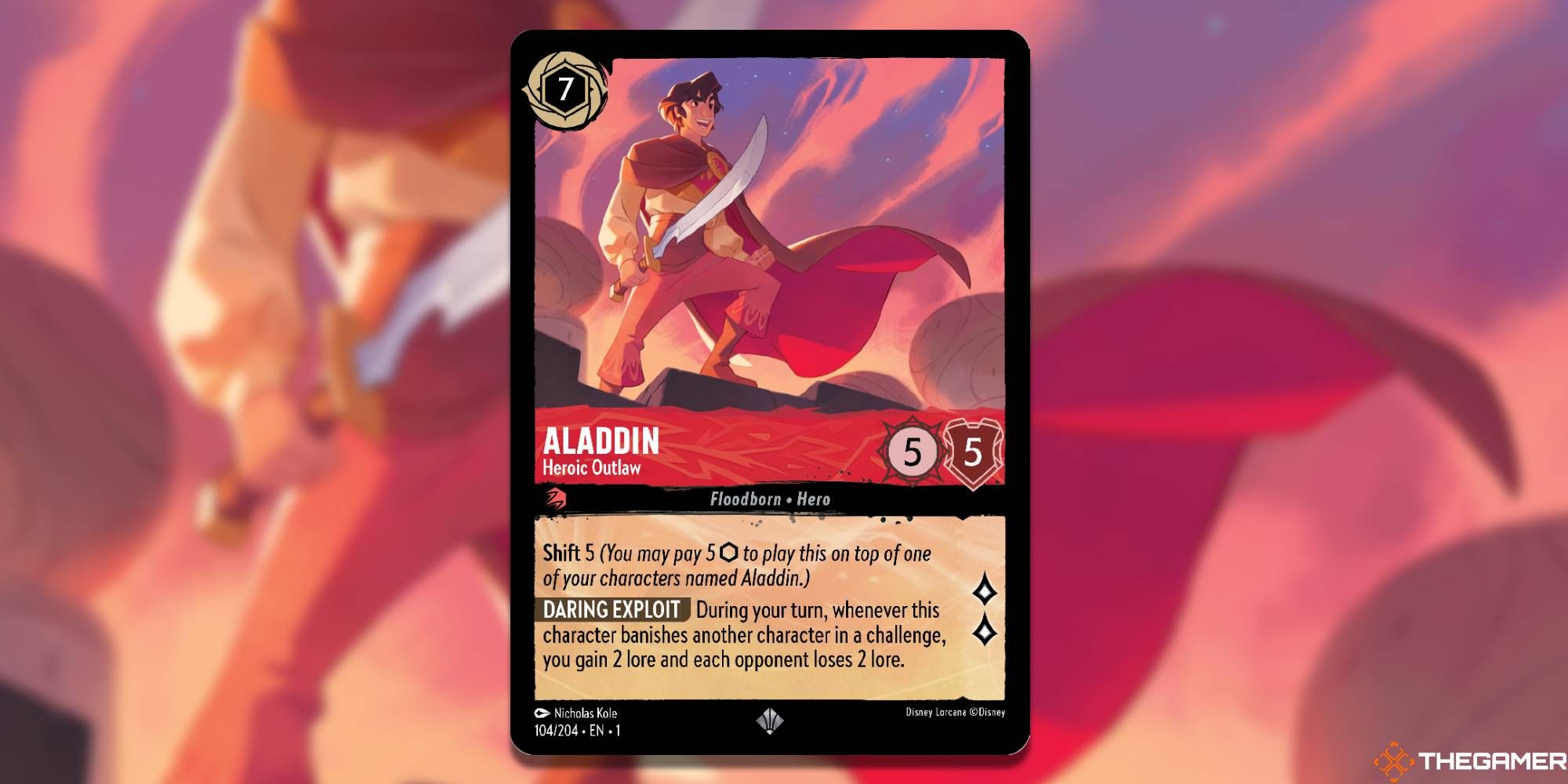I don’t know what’s harder: waiting for Disney Lorcana to launch so you can finally start collecting cards and playing games with your friends, or having a whole bunch of Lorcana cards you can’t tell anyone about. I’m sure no one is going to feel bad for the guy that got the starter decks early, but trust me when I tell you sitting on this info and not being able to play with others has been torture. The only reason I didn’t lose it and start screaming about Mufasa and the Mad Hatter to anyone that would listen is the fact that I have a wonderful wife that loves Disney, and due to my persistence, now loves Lorcana too.
We’ve played a lot of games together over the last month. We got a few games in most weeknights, and spent a few Saturdays playing the entire day too. When she had had enough, I sat there by myself and smashed these starter decks into each other (it’s called goldfishing, and it's surprisingly satisfying). After more than 100 games, I’ve come to some conclusions about these decks, and I have a pretty good sense of their strategies, strengths and weaknesses, and how they perform in each match-up. And now, whether you’re playing in next week’s Gen Con tournaments or preparing for the August 18 launch, I bring this wisdom to you.
I’ve done individual deep dives into each of the three decks as well. If you want a detailed walkthrough of each deck, you can follow these links for Amber/Amethyst, Ruby/Emerald, and Steel/Sapphire. If you use any of my guides you have to call them Amberthyst, Ruberald, and Steelphire. That’s the rule (EDITOR’S NOTE: That’s not the rule).
The first thing to know about these decks is that they’re incredibly inconsistent. That’s the point! These decks are meant to introduce you to gameplay and strategies, but you’re also meant to adjust and tailor them to make them stronger. Each deck even comes with a booster back, so you can start making some changes right away. If you play them just as they’re built, like I did, you’ll find that it’s difficult to pull real strategies together, because there are so many different cards, and very few copies of each. I’d say between the three, Amber/Amethyst is the most unpredictable, while Steel/Sapphire is the most inconsistent.
It’s difficult to choose the best one, because there’s a bit of a rock-paper-scissors quality to them.
Steel/Sapphire does one thing: ramp into a huge inkwell and drop high-cost cards early and often. If you can ramp early, you can win quickly, but the longer the game goes on, the more you’ll struggle against the other decks. It’s a high-risk, high-reward deck that’s a ton of fun - if you can get your big scary cards on the board fast enough.
It has a lot of great removal tools like Fire the Cannons and Smash that can deal with Amber/Amethyst’s small drops. Grab Your Swords can wipe an Amber/Amethyst board all on its own, and adding in a single Tinker Bell, Giant Fairy to this deck could chop it off at the knees.
Conversely, Amber/Amethyst has a pretty easy time stealing the board from Emerald/Ruby. Amber/Amethyst is a go-wide deck that’s meant to overwhelm your opponent with lots of small characters, then seize the advantage with a variety of combos. It’s great at producing card advantage with its draw and return-to-hand options.
If you focus on questing and filling the board, it can be difficult for Emerald/Ruby to make good trades and still keep up on point total. If you force your opponent into a race, Amber/Amethyst will most often come out on top.
Finally, Emerald/Ruby is a versatile deck that excels at achieving board control through items, actions, and abilities that create favorable trades for you. It’s got the most Evasive cards, which can be a win condition in itself, and it’s filled with cards that steal lore from your opponent.
Emerald/Ruby can totally shut down Steel/Sapphire with cards that bounce high-cost characters back into your opponent's hand and abilities that allow you to trade up against big characters in Challenges. Dragon Fire will instantly take out any of Steel/Sapphire’s big cards - and you have three of them. All you have to do to beat Steel/Sapphire is slow it down, and Emerald/Ruby is great at that. For that reason I’d consider it the most control-oriented of the three, despite Amethyst traditionally being the control-focused ink, and as a result by far the most difficult to pilot.
So instead of recommending the ‘best’, let me recommend a deck based on your preferred playstyle. If you want to play a lot of cards and fill your board up with characters, Amber/Amethyst is your deck. It’s also the best deck at keeping cards in your hand, and it’s filled with fun combos to pull off.
If you want to frustrate your opponent and mess with their head, play Emerald/Ruby. Having lots of Evasive cards on the board is frustrating enough, but this deck also has lots of ways to steal lore from your opponent, and buff your characters so they can make surprising plays. If you’re a trickster that doesn’t mind doing some creative math, this is the deck for you.
As for Steel/Sapphire, this is for those that just wanna throw down some big ol’ monsters. If you’re the kind of person that wants to feel the table shake when you play an 8/8 Maui, this is the deck for you. Ramping and winning games quickly can be a lot of fun and intimidate your opponent into making mistakes in future rounds too. This deck is also full of Lion King characters, so if you’re a big fan you’ll definitely enjoy playing this one.
Multiplayer is a whole different story. If you have multiple opponents, Emerald/Ruby gets a lot more value, since its lore-stealing cards will steal from everyone at the table. Unfortunately, Steel/Sapphire becomes harder to play, as it becomes easier for multiple opponents to chip away at your big cards before it comes back around to you again. I’ve only been able to play a few three-player games so I’m not nearly as researched on the subject, but the play-and-pray style of Amber/Amethyst seemed to be the most consistent in multiplayer.
All three of these decks are a lot of fun to play and I encourage you to play with all of them, but if I had to choose a favorite, it’s Emerald/Ruby. It might not be the easiest deck to play, but the combination of Evasive cards, lore stealing, and powerful control actions makes it a great deck for shutting down your opponent’s shenanigans and controlling the pace of the game, which is exactly how I like to play.
A little closer to launch, look out for my starter deck rebuild guides, which will give you good, better, and best options for tailoring these decks and adding some consistency and power to them.






